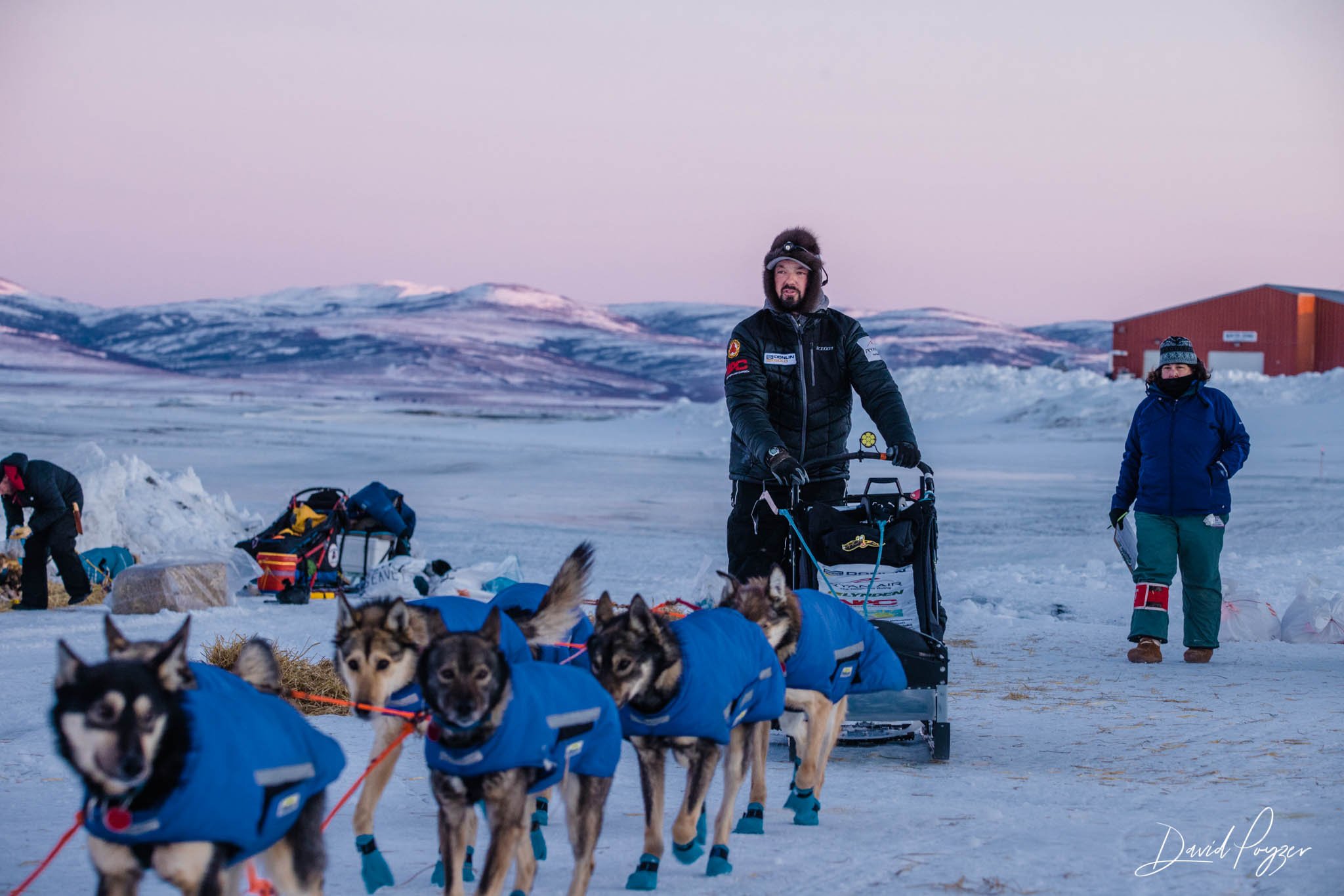The Amazing Dog Paw
Chukchi sled dog during Nadezhda Hope race in Chukotka, Russia.
Credit: Mille Porsild / milleporsild.com
Sled dogs that are training or racing wear booties. Not to keep the paws warm, but to protect them when running mile-after-mile, or kilometer-after-kilometer, from the abrasive surface of snow, ice and even frozen dirt when little to no snow cover.
How is it that they don’t need the booties to stay warm as they move across snow and ice, and in temperatures even 40-50 degrees below zero?
The dogs have an internal circulation system that prevents their paws from freezing. It is an adaptation seen in many Arctic and Antarctic animals. Seals, whales and penguins have the same ‘system’ in their flippers, fins and feet—and like the dog, the Arctic fox and the wolf have it in their paws too.
Within the footpad on the dog’s paws are veins that are very close to arteries. Arteries carry blood from the heart to all parts of the body, and veins carry blood toward the heart.
So, the arteries carry warm blood from the heart to paw on the dog where it then heats up the cooler blood returning through the veins. This means the blood that then continues on its return towards the core of the body and heart is ‘warmed up.’ This is significant because the brain first and foremost is set to ensure that the core of the body is warm, to ensure the function of the organs. Humans tend to first get cold hands and feet—if our body core temperature is cooling, the brain closes off blood flow to our extremities: the feet and hands, s do not have a similar system to dogs. This system is called vascular counter-current heat exchanger.
The arrangement helps the dog hold on to body heat, which otherwise be easily lost through the hairless paws. Warm blood reaches the pad’s surface to keep frostbite away, but without the animal loosing a lot of heat.
In addition, blood vessels in the dog paws can open and close with changes in temperature. This allows more or less blood to flow, depending on the need. The temperature of all mammals is regulated and determined by the amount of blood flow. When you exercise hard, your heart is pumping harder getting oxygen out to your muscles… this makes you feel hot. The footpad on the dog has many blood vessels. Therefor their paws bleed easily when injured—and again, it means that the paw is excellent for regulating the overall body temperature of the dog.
If your dog is getting hot, standing in cold water will cool them down. Dogs cannot sweat through their skin on the body like we do to cool off. But, in addition to cooling off because of the many blood vessels in their paw, the paw (and nose) is where dogs have sweat glands!
The inner layer of skin on the paw has sweat glands that convey perspiration to the outer layer of skin, which not only help cool a hot dog, but also keeps the pads from getting to dry. Paws can also exude moisture when a dog gets nervous or experiences stress; dogs get sweaty ‘hands,’ just like we humans do!
Dog’s toes are equivalent to our fingers and toes, although they are unable to wiggle them with the ease that we do. But unlike humans (who like bears walk on their sole), dogs are digitigrade animals—like a horse. Its their digits, their toes, that are carrying the entire weight of their body. In this way the toe bones are so important to a dog. Because so little surface area needs to get off the ground, digitigrade locomotion is swifter… ‘Digitigrades’ generally move more quickly and quietly than other animals.
The skin on the dog’s paw pads is extra thick and not found in any other area of the dog’s body. It is made of layers of insulating fat and connective tissue. The thick pads absorb shock and increase endurance, and the roughness of the pads allow for good traction for quick turns and effective sprinting.
There are three parts to a paw so to speak: In the center is the part of the pad that sort of looks like a heart—metacarpal pad it is called on the front, and metatarsal on the back paws. The four digital pads are the smaller once ‘on the toes.’ These pads all provide traction, work as shock absorbers and help protect the bones and joints in the foot. Dogs with dewclaws also have what is called the carpal pad. They work like breaks and help the dog navigate slippery or steep slopes.
Of course we all know dog paws are handy for digging! Now, did you also know a female dog in heat will drip scent from her paws!?
Yes, paws are amazing. It is for good reason dog mushers protect the paws of the sled dogs and care for them so vigilantly, covering them with booties while attending to them with massage, therapeutic oils and protective creams. Besides from the fact that excellent paw health is paramount for the performance of any sled dogs—mushers depend on the love and comfort we all feel that moment we hold a dog paw in our hand.
Viraq putting booties on her team member.
Credit: Peter Varga, Tying Knots Arts Studios – http://facebook/TyingKnotsArtStudios
Richie Diehl putting booties on his team member.
Credit: Peter Varga, Tying Knots Arts Studios – http://facebook/TyingKnotsArtStudios




































